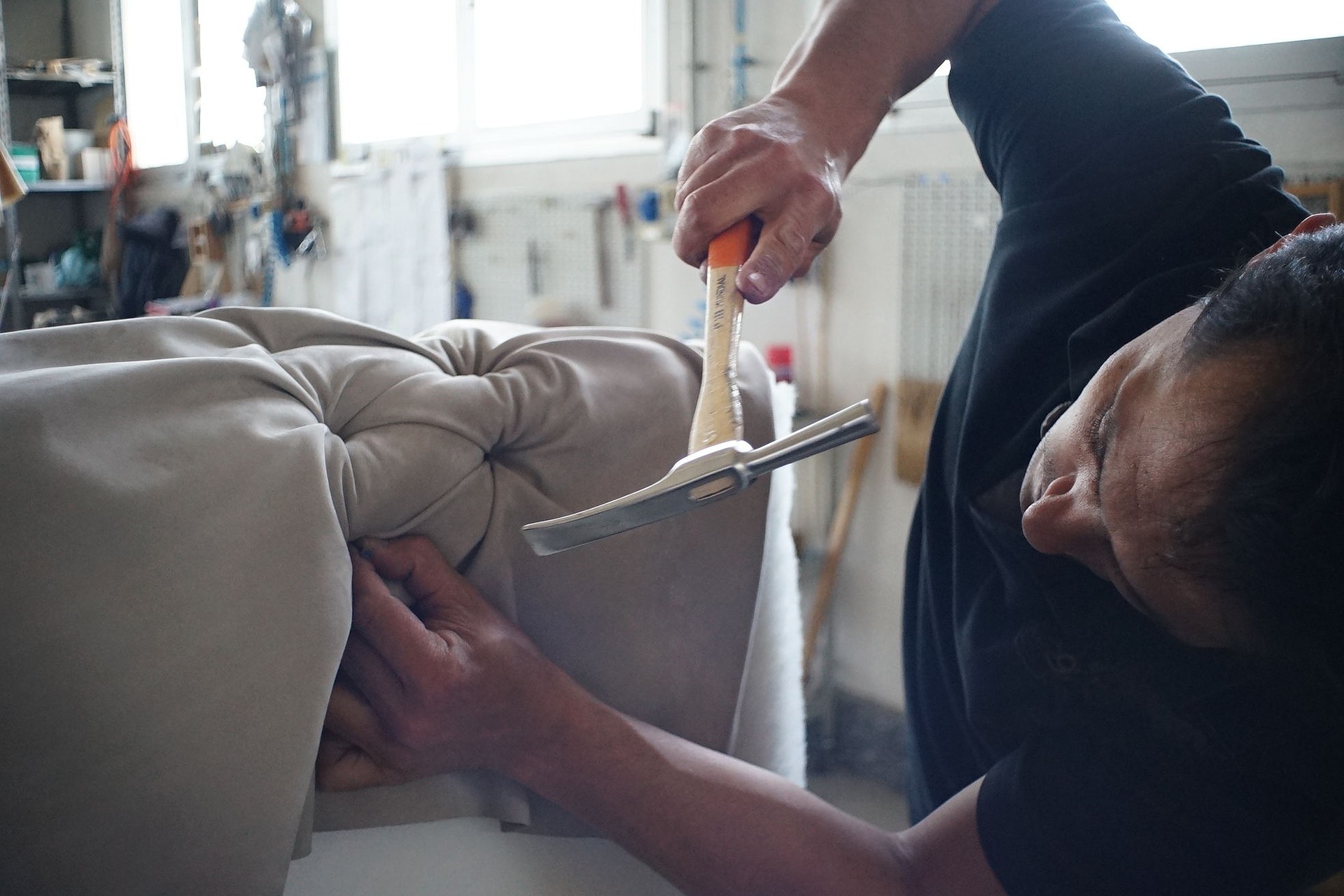Build it yourself: How to start a manufacturing business

If you have ever struggled to find a product that fits your needs or realized one doesn’t exist, you might be pondering the entrepreneurial path. Maybe you’ve already started down this road by researching and have realized that starting your manufacturing business could be the answer.
Are you wondering how to start a manufacturing business? This guide is how!
It will take you through the basics of starting a manufacturing business, from researching the market to building a prototype to scaling for production. There will be plenty of challenges along the way, but you can turn your manufacturing dreams into a reality with careful planning and execution.
Ready to turn your dreams into reality?
Katana Cloud Inventory is a scalable tool that supports new manufacturers with the essential tools they need to start their business and keeps up with your business as it grows.
What is a manufacturing business?

A manufacturing business is a company that produces physical products.
This could be anything from food manufacturing to furniture or electronics. The manufacturing process generally involves taking raw materials and transforming them into a finished product through various steps, such as assembly, packaging, and quality control.
There are many different manufacturing businesses, each with its unique set of challenges. For example, food product manufacturers must deal with perishable ingredients in the supply chain and strict regulations, while vehicle manufacturers have to worry about driver safety and emissions standards.
Even with these hurdles to overcome, it can be an extremely rewarding experience to see your product go from an idea to something that people can use in their everyday lives.
The first time you see something you created on a store shelf, or hear someone talking about how your product has made their life better, is an unforgettable feeling.
If you’re ready to dive in and learn how to start a manufacturing company, the first step is to research the market and find a niche that you can fill.
What is the best manufacturing business to start?

Some people might tell you it is whatever has the highest profit margins, but it’s not that simple. The best manufacturing business to start is one that meets a need in the market and that you are passionate about.
It could also be something that you have some experience with or knowledge of so that you can hit the ground running and avoid any costly mistakes.
To start your business, weigh the pros and cons of your hobbies, interests, and skillset:
- What do you know a lot about?
- What are you good at?
- Are there any unsolved problems in your industry that you could provide a solution for?
The answer to these questions is the best place to start when it comes to how to start a manufacturing business.
For example, if you are passionate about sustainable living, you might want to consider starting a company that manufactures solar panels or wind turbines.
Don’t want to set your sights so high? What about simple carbon sequestration devices for the home garden?
There are endless possibilities, and once you have a few manufacturing business ideas in mind, it’s time to start doing some market research.
Does manufacturing make a lot of money?
Here’s the key question that you’ll have to answer.
There’s no point in starting a company if it’s not going to be profitable, so you’ll need to determine if there is a demand for your product and what the margins will look like.
Competitor analysis
To get an idea of the current landscape, you’ll need to find out who your potential competitors are and what they are offering. This will give you a good starting point for understanding what products are already available and where there might be gaps in the market that you can fill.
There are a few different ways to go about this. First, you can search online for companies that offer similar products or services. Take a look at their websites and see what kind of company news they provide through press releases, how they have used search engine optimization (SEO), or any information on startup costs.
You can also find reports on industry trends that will give you an overview of the competitive landscape. Trade associations are another great resource for understanding the manufacturing industry and competitors.
Once you have a good understanding of the competition, it’s time to take a closer look at your potential customers.
Audience analysis
Who is going to buy your product? This is an important question to answer because it will determine how you market and sell your product. There are a few different ways to segment your targets, but some common ones include:
- Age
- Gender
- Location
- Income level
- Interests and hobbies
You can also sub-segment your audience by needs. For example, if you are selling a new type of baby stroller, your target audience might be parents with young children. But you could also segment by needs, such as parents looking for a lightweight stroller that is easy to fold.
Once you have a good understanding of your target audience, you can start to think about how to reach them. What channels will they be using? Where do they spend their time online? What kind of language will resonate with them? Should I hire a content marketer to increase interaction?
Gathering feedback
If you just take publicly available industry insights and start making assumptions, you might end up with the wrong type of product or, even worse, no customers. The best way to avoid this is to gather feedback from your potential customers before you even start the process.
There are a few different ways to do this. One is to create a survey and send it out to some people who fall in your target market. Another is to reach out individually and set up interviews or focus groups. You can also use social media marketing on platforms like Twitter or Facebook to gauge interest in your product idea.
This was the basis of crowd-funding sites like Kickstarter, which provided entrepreneurs who had nothing but an idea with a place to validate and find an audience for it before risking much capital.
5 tips for how to start a manufacturing business

Once you’ve found a product that you believe in and have done the research to discover the potential market, it’s time to start putting your business together. These tips will give you the foundation on how to become a manufacturer.
1. Start small and bootstrap
Unlike tech startups that are looking for early-stage angel investors, you’ll likely need to finance your manufacturing business yourself. This is called bootstrapping, meaning that you’ll be reinvesting any profits back into the company to help it grow.
That doesn’t mean you can’t eventually seek funding from outside sources, but in the beginning, it’s important to keep costs low, invest in strong inventory management practices, and not take on too much debt. One way to do this is by starting small and gradually scaling up as demand for your product increases.
Consider things like:
- Do you need a production facility?
- How much business tax will be owed?
- Can you outsource some of the work?
- What kind of equipment do you need, and how much will it cost?
- How many employees will you need to hire?
- What kind of marketing efforts will be required?
All these factors will play a role in how much money you’ll need to get started. If you don’t have a huge amount of capital saved or access to risk-free financing, you might instead think, “I want to start a manufacturing business that can be run from my own home.”
Things like jewelry making, soapmaking, and even a food business can be done on a smaller scale without the need for expensive equipment or a large workforce.
Pro tip: Once you know what you want to build, the next step is learning how to start manufacturing a product.
2. Plan to scale
One of the biggest mistakes that small manufacturing business owners make is not having a plan for a sudden increase in demand. If your product takes off and you can’t keep up with the orders, you’ll quickly lose customers and damage your reputation.
It could even sink the entire operation, the opposite of what should happen when you’re making a desirable product.
It’s important to have a scalable business plan from the beginning so that you can take advantage of any growth opportunities that come your way. This might mean:
- Outsourcing some of the work to other manufacturers
- Interviewing a potential partner who is interested in the business
- Investing in equipment that can handle larger production runs
- Develop marketing campaigns that can be launched quickly
- Hiring more employees or consultants to help with the increased workload
Even if you don’t have enough capital to set up these processes ahead of time, there should be a concrete plan in place for how you will scale the business if demand increases. “If I receive a purchase order for 1,000 units, I will do X.”
This can be a make-or-break factor for small manufacturers, so it’s important to get it right.
3. Lean manufacturing
There is a methodology called lean manufacturing that can help you eliminate waste in your processes and make your business more efficient. This could be a valuable tool as you scale up since it will help you save time and money while still ensuring that quality standards are met.
4. Don’t be afraid to pivot
When you are focused on how to become a manufacturer, it might be tempting to jump at the first idea you think of. But manufacturing is a complex process, and there are many factors to consider before you commit to a product. It’s important to have a flexible mindset and be willing to pivot if necessary.
For example, you might research the market and realize that there is more demand for a different product than the one you originally planned to make. Or you might build a prototype and discover that it’s not as easy or cheap to produce as you thought.
In either case, it’s better to make a change early on than to waste time and money on a product that won’t be successful.
Pivoting can be difficult, but building a successful manufacturing business is often necessary. You can increase your chances of success by being open to new business ideas to start making changes.
5. Leverage software solutions
If you were reading an article on how to get into manufacturing 30 years ago, it might have suggested learning accounting, design, and a host of other business functions. But today, there are third-party software solutions for just about everything.
You can use accounting software to keep track of your finances, design software for 3D printing of your product, and project management software to plan and execute your manufacturing process.
There are also full ERP solutions like Katana that combine many of these features into one platform. This can be a big help for small businesses that don’t have the resources to invest in multiple software solutions.
By integrating all of these tools into one system, you can get a better overview of your business and make more informed decisions.
Get started small business manufacturing software
Katana Cloud Inventory is a scalable tool that supports new manufacturers with the essential tools they need to start their business and keeps up with your business as it grows.
Table of contents
Manufacturing guide
More related to manufacturing
Get visibility over your sales and stock
Wave goodbye to uncertainty by using Katana Cloud Inventory for total inventory control






